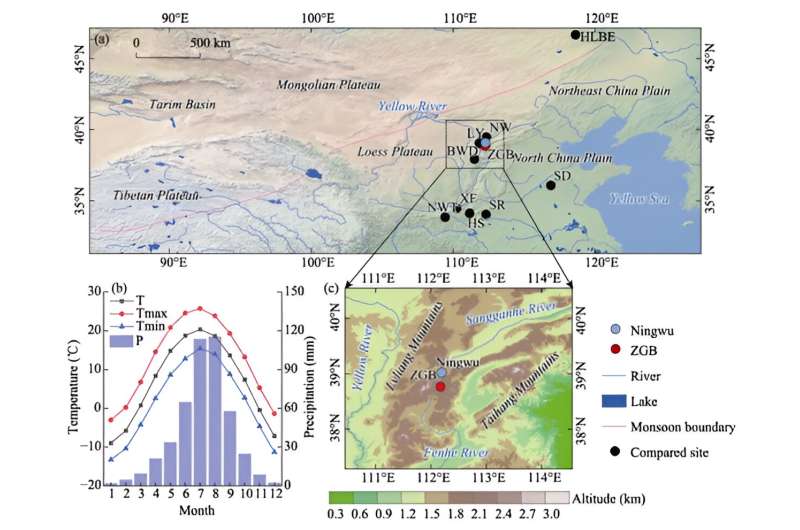This article has been reviewed according to Science X's editorial process and policies. Editors have highlighted the following attributes while ensuring the content's credibility:
fact-checked
proofread
Unlocking the climate secrets of North China with ancient tree rings

A study published in the Journal of Geographical Sciences reveals a novel method for reconstructing historical warm season temperatures in North China. Utilizing the blue intensity (BI) of tree rings of Picea meyeri, researchers have developed a 281-year chronology, offering unprecedented insights into the region's climatic past.
The escalating public concern over climate warming, due to its significant impacts on society, ecosystems, and the environment, underscores the importance of understanding long-term climatic conditions across different regions. As the limited observational records constrain our comprehensive grasp of climate change, tree-ring data prove to be a critical proxy, which provides high-resolution and accurately dated insights into climate dynamics over the past millennium.
By analyzing 45 core samples, the researchers established a chronology that mirrors the region's warm season temperatures from May to August. Their methodology significantly advances previous efforts by incorporating latewood density and BI data, filling a critical gap in our climatic understanding.
This approach allowed them to construct a detailed temperature record and reveal periods of climatic fluctuations that align closely with historical climate patterns. The study not only demonstrates the effectiveness of BI as a proxy for historical climate analysis but also opens new avenues for reconstructing past climates of other regions.
By correlating the BI data with recorded temperature variations, the researchers could trace back temperature trends to 1760 CE, providing a much-needed long-term perspective on climate change in North China. This research stands as a testament to the potential of dendroclimatology in contributing to our understanding of global climate dynamics.
Professor Chen Feng, the study's corresponding author, emphasized the significance of this research. "This method not only enhances our ability to decipher past climate variations but also strengthens our capacity to forecast future climatic trends, which enables us to avert catastrophic environmental impacts to some extent," he said.
This study provides valuable data for understanding the dynamics of climate change in North China, revealing seven high-temperature periods and three low-temperature periods over the past 261 years. It demonstrates the potential of BI as a cost-effective and replicable method for climate reconstruction, which is crucial for regional climate prediction and environmental planning.
More information: Qiaomei Chen et al, Warm season temperature reconstruction in North China based on the tree-ring blue intensity of Picea meyeri, Journal of Geographical Sciences (2023). DOI: 10.1007/s11442-023-2187-6
Provided by IGSNRR CAS




















